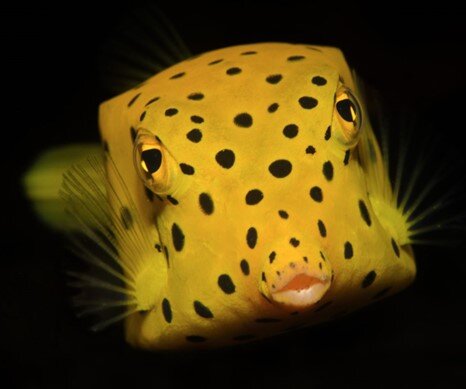Promoter: Sam Van Wassenbergh

Co-promoter: Peter Aerts
Supervision: Merel Van Gorp
The head and body of boxfish (Ostraciidae) are covered by hexagonal scales that are firmly attached to each other and together form the carapace. This offers protection against predators. However, the carapace probably causes a severely reduced mobility of the outer surfaces of the head. Even though boxfish are benthivores that mainly bite off pieces of sessile organisms on reefs using their jaws and teeth, suction flows must be generated to transport pieces of food into the mouth and to the oesophagus. This typically requires movements of the head skeleton (opercula, suspensoria, hyoid), which results in an externally visible expansion of the head to increase the volume of the buccopharyngeal cavity. If the head and body form a rigid box, then how can these expansions be generated? Are the scales less firmly attached to allow suction and respiration movements by expanding and compressing the buccopharyngeal cavity? Or is suction (and respiration) only driven by movement of the mouth and perhaps some soft tissues near their small opercular openings? The objective of this master thesis is to resolve this mystery. Firstly, high-speed videos from different views on the fish will be analysed to describe what head motions are occurring during food uptake. Next, morphological inspections will be performed to better understand the functional morphology of feeding in boxfish.
Techniques: kinematical analysis, morphological analysis, CT-scanning, graphical 3D reconstructions.